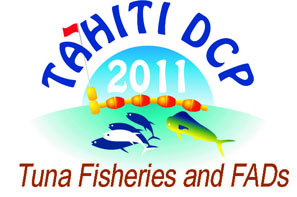Nearshore FAD types and designs currently used in the Pacific
1 : Secrétariat de la Communauté du Pacifique
(CPS)
BP D5, 98848 Noumea Cedex, Nouvelle Calédonie -
Nouvelle-Calédonie
2 : Secrétariat de la Communauté du Pacifique
(CPS)
* : Corresponding author
BP D5, 98848 Nouméa Cedex -
Nouvelle-Calédonie
While, until recently, anchored FADs in the Pacific region were typically deployed several miles offshore, a growing trend is to moor them closer to the reef edges. Those nearshore FADs are becoming popular because they are seen to be effective in aggregating fish; they are cheaper to construct and easier to deploy; they reduce fishing operations costs; and they improve the safety of fishers in case of small craft accidents or engine breakdowns during FAD fishing operations. Nearshore FADs also contribute to food security and provide coastal fishing communities with alternatives to reef fisheries. One of the challenges common to nearshore FAD programmes in the Pacific region is to keep the FADs moored long enough to cover the cost of producing them and to provide long term returns before they break away and are replaced. The key problem areas that affect FAD longevity are vandalism and design faults in the anchor mooring system and the hardware used in joining sections. SPC and several Pacific Island Countries and Territories are addressing those problems, mainly through intense FAD awareness promotion, prosecution of vandalising offenders, and improved designs with the use of pressure floats and innovative mooring methods and systems. In places where the threat of vandalism is still high, another innovation, that may also address the longevity issue, is to deploy subsurface FADs. Sub-surface FADs of different designs have already been deployed in Fiji, Tonga, Samoa, Pohnpei, and Kiribati, with some encouraging preliminary results.

 PDF version
PDF version
